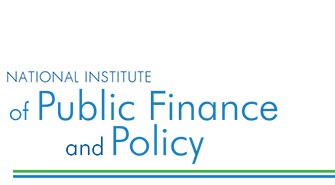Demonetization, the Cash Shortage and Black Money
ASHOK K. LAHIRI, Chairman, Bandhan Bank, Kolkata. email:ashoklahiriin@yahoo.com
|
The demonetisation of old INR 500 and INR 1,000 notes on November 8, 2016 aims to curb fake Indian currency which finances terrorism, and like the preceding two in 1946 and 1978, to contain black money. There are instances when countries, for example, Canada and Singapore, discontinue printing some high value notes. While they advised the banks to return such notes to the central bank for destruction, these continued as legal tender.
There are two major differences between the stoppage of printing of high value notes in these countries and the recent Indian demonetisation. Unlike these other countries, in India, though the old high value notes can be returned to the RBI with proper documentation even after December 30, 2016, these are no longer legal tenders beyond November 8, 2016. An additional difference is that not only there is a new INR 500 note, but an even higher denomination note than INR 1,000, namely INR 2,000, that has been introduced. The risks associated with INR 500 and INR 1,000 notes only get magnified with INR 2,000 notes.
Demonetisation of more than an estimated INR 15 trillion currency in circulation, or 85 per cent of the total, has resulted in a cash shortage. The full and free convertibility of current and savings accounts at banks into cash stands suspended. A firm or an individual may have money in the bank, but cannot withdraw as much of it as desired in cash. Even for the withdrawal of the limited sums, there are long queues and endless waits outside banks.
Cash shortage is unusual but not unknown across countries. It has happened, for example, with hyperinflation in Austria and Germany in the 1920’s and in 1992, in the former Soviet Union after it disintegrated. The cash shortage in India is without any of these extraordinary antecedents. The paper attempts to analyse three questions. First, when is the cash shortage likely to disappear? Second, what is the likely impact
|
of cash shortage on growth in the economy? and third, what is the likely impact of demonetisation on 'black money'.
The use of non-cash medium of payments may be encouraged by the current cash shortage, but, with supplies only from the currency presses in India, the shortage is unlikely to disappear by the end of 2016. Import of currency printed abroad may provide a solution for ending the shortage soon. The impact of the shortage, if it continues, will be fully felt in the last quarter of 2016-17. Its growth impact in 2016-17 is 0.7-1.3 per cent depending on how much of the shortage continues and for how long. The long run growth effect will depend on how the demonetisation is followed up by suitable measures to control the shadow economy.
The big painful jolt of demonetisation creates the right psychological milieu for the war against black money to start. Only time will tell whether steps, such as the Income Declaration Scheme (IDS) in the Budget for 2016-17, the August 2016 amendment of the Benami Transactions (Prohibition) Act of 1988, and the Taxation Laws (Second Amendment) in November 2016, are parts of a concerted plan for tackling black money, and this time is different from 1946 and 1978. With the strides made in digitisation of tax returns and bank records together with PAN, AADHAR and KYC regulations, compared to 6 per cent in 1946 and 11 per cent in 1978, at least 15 per cent or INR 2.2 trillion of the demonetised notes not exchanged into deposits or cash will provide a preliminary positive feedback on the success of the current demonetisation.
Reference
Lahiri, Ashok K. (2016). Demonetisation and the Cash Shortage, NIPFP WP No. 184 (December).
|




